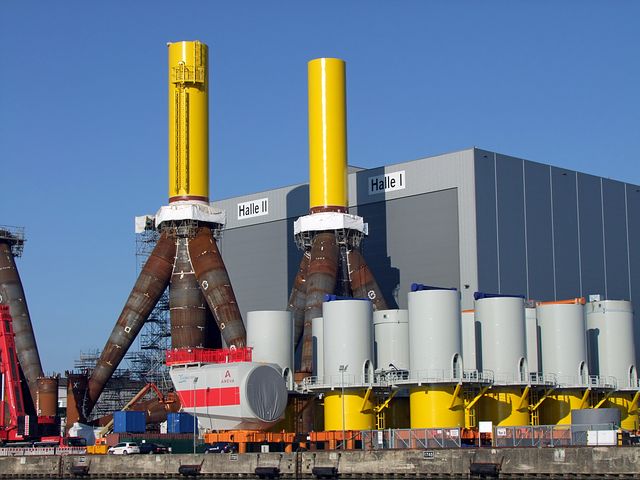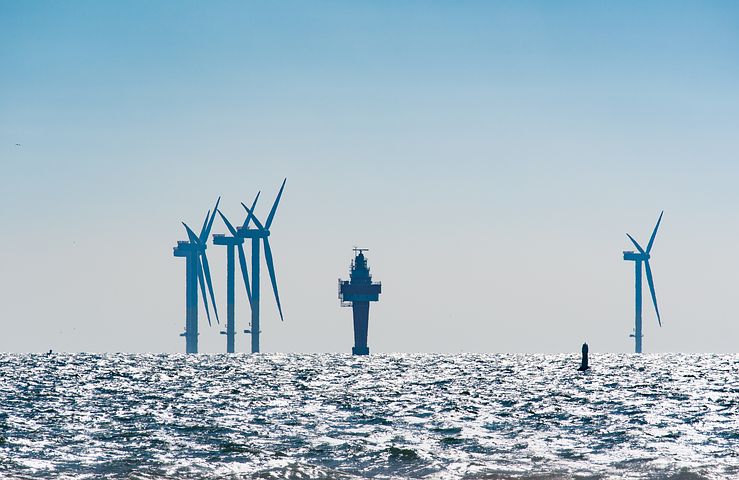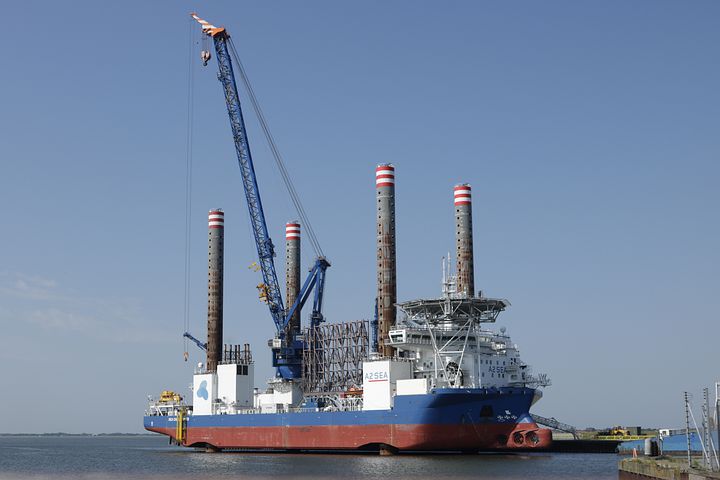5 Takeaways from Vineyard Wind
The federal Bureau of Ocean Energy Management ("BOEM") recently estimated that - using currently available technology - as many as 22 gigawatts of offshore wind energy capacity can be installed along the East Coast of the United States in the next ten years. But for developers to build even 1 megawatt of such capacity, they must first navigate BOEM's environmental review process. This article identifies five lessons for future environmental reviews, based on BOEM's nearly completed review of the Vineyard Wind 1 offshore wind farm project ("Vineyard Wind").
 Vineyard Wind is an 800-megawatt wind energy facility planned for the Atlantic Ocean about 14 miles south of Martha's Vineyard, Massachusetts. It will consist of up to 100 wind turbines, and will transmit electricity to a proposed onshore substation via submarine cables (while in the water) and onshore cables (after landing is made). The project requires BOEM approval of a construction and operations plan ("COP"). The project developer is also seeking a federal Clean Water Act permit (to allow for dredging and filling activities) and a National Marine Fisheries Service incidental take permit (to allow the incidental take of marine mammals during construction activities). All three federal approvals are subject to review under the National Environmental Policy Act ("NEPA"), 42 U.S.C. § 4321 et seq., which requires federal agencies to take a "hard look" at the environmental impacts (broadly defined) of their actions. BOEM is the lead agency for conducting that review.
Vineyard Wind is an 800-megawatt wind energy facility planned for the Atlantic Ocean about 14 miles south of Martha's Vineyard, Massachusetts. It will consist of up to 100 wind turbines, and will transmit electricity to a proposed onshore substation via submarine cables (while in the water) and onshore cables (after landing is made). The project requires BOEM approval of a construction and operations plan ("COP"). The project developer is also seeking a federal Clean Water Act permit (to allow for dredging and filling activities) and a National Marine Fisheries Service incidental take permit (to allow the incidental take of marine mammals during construction activities). All three federal approvals are subject to review under the National Environmental Policy Act ("NEPA"), 42 U.S.C. § 4321 et seq., which requires federal agencies to take a "hard look" at the environmental impacts (broadly defined) of their actions. BOEM is the lead agency for conducting that review.
BOEM produced a Draft Environmental Impact Statement ("DEIS") for Vineyard Wind in December 2018, a supplemental statement ("SDEIS") in June 2020, and was scheduled to issue a Final Environmental Impact Statement in mid-December 2020. The final statement is required before BOEM can publish a "record of decision" announcing whether it is approving the COP, approving the COP with modifications or disapproving the COP. However, on December 1, 2020, Vineyard Wind's developer suddenly withdrew its COP application. The developer has said that the withdrawal is only temporary, and was done so as to allow a final technical review of the project's newly selected turbine technology (which is publicly reported to be GE's Haliade-X 13 MW turbine). BOEM's website now says that there is no ongoing environmental review of the Vineyard Wind project.

Five Takeaways for Future Environmental Reviews
Although the delayed completion of the COP process for Vineyard Wind is disappointing (as many were hoping it would provide offshore wind guidance) the review process to date has, nonetheless, offered a number of insights for developers. Below we highlight five important lessons so far from Vineyard Wind for other offshore wind projects.
1. BOEM now has a framework for identifying "cumulative" impacts.
For the past forty years, NEPA's regulations have required federal agencies to analyze the direct, indirect, and cumulative impacts of their actions. But what is the baseline, or context, against which to measure cumulative impacts? BOEM's June 2020 SDEIS for Vineyard Wind answers that question for the Atlantic coast offshore wind industry. The SDEIS explains that BOEM considers it "reasonably foreseeable" that 22 GW of wind capacity will be installed in the 17 active Atlantic wind lease areas in the next ten years, including up to 2000 individual turbines. BOEM has said it intends to use that estimate, initially developed for the Vineyard Wind project, as a template for future environmental reviews of other projects.
2. But the NEPA rules have changed.
Ironically, just one month after BOEM released its 420-page cumulative impacts analysis, the Trump Administration revised the NEPA regulations to eliminate the previously express requirement that federal agencies consider cumulative impacts. Thus, although BOEM now has a template for analyzing cumulative impacts, it may no longer need it. This development may help speed up future environmental reviews even more. It is unknown so far whether the Biden Administration will seek to reverse this change in NEPA regulations.
 3. Adverse environmental impacts from offshore wind are highly site specific.
3. Adverse environmental impacts from offshore wind are highly site specific.
The Vineyard Wind environmental review documents underscore, once again, that adverse environmental impacts are virtually always site-specific; they depend on the exact particulars of the project in question. BOEM's DEIS and SDEIS for Vineyard Wind explain that the project will have many positive environmental impacts-on air quality, greenhouse gas emissions, reef protection, and many other matters. Those positive impacts are likely to be shared by other offshore wind farms. But the adverse impacts will not necessarily be shared, because they are site specific. The principal environmental concerns identified by BOEM for Vineyard Wind involve potential negative impacts on commercial fishing activities, particularly with respect to fishing lanes (although input from the Coast Guard indicated that one-nautical mile spacing of turbines--Vineyard's proposed layout-did not materially adversely impact navigation). Those impacts may or may not be as critical in other offshore locations. Just as important, most of the permanent adverse impacts from Vineyard Wind are expected to be on land, rather than at sea. Those impacts relate to potential habitat destruction associated with the project's onshore infrastructure.
4. Wind technology is improving faster than the permitting process.
When BOEM released its DEIS in December 2018, it assumed that offshore wind turbines installed in the next ten years would be between 8 and 10 MW each. In the SDEIS, issued in June 2020, BOEM assumed that those turbines would be between 8 and 12 MW each. And now, the entire Vineyard Wind environmental review process has been put on hold because the developer wants to do a further technical review of the actual 13 MW turbines chosen for the final design. The lesson here is that wind technology is improving rapidly, and the permitting process may not be able to keep up. Developers would be wise to build some technological flexibility into their plans when submitting permit applications.
5. It's not over until it's over.
The sudden withdrawal of Vineyard Wind's COP application, even if temporary, is a powerful reminder that the environmental review process is not over until it is over. Even after more than two years, the BOEM process is not complete and it is not clear when it will be complete.
The NEPA regulatory landscape is still evolving, and wind technology is changing even more rapidly. In these circumstances, developers, investors, lenders and other parties interested in offshore wind projects would be well-advised to consider permitting and environmental review issues early in the process of any offshore wind-related transactions.
Jacob Hollinger, Edward Zaelke and Christopher Gladbach, partners in McDermott Will & Emery's Global Energy Project Finance group, provide counsel to clients in energy M&A, project development, tax equity,and project finance transactions.
McDermott Will & Emery | www.mwe.com
Author: Jacob Hollinger, Edward Zaelke, and Christopher Gladbach








